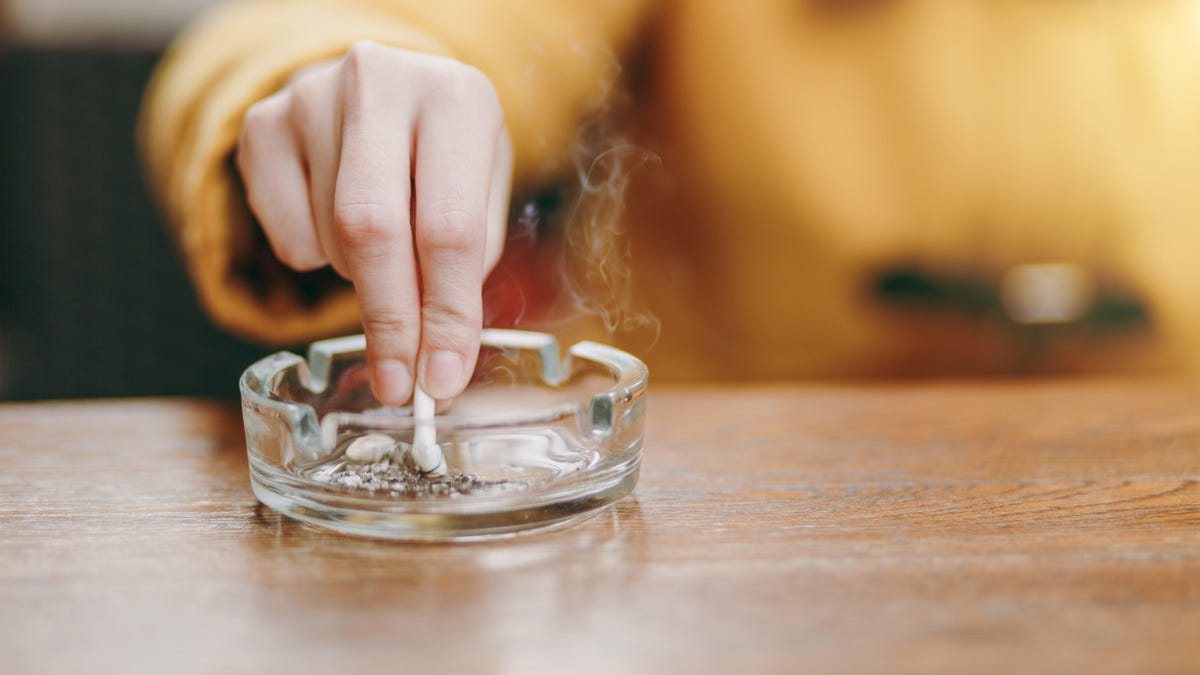How to Get Rid of Smoke Smell in a New Home

As hard as it may be to believe, many people still smoke cigarettes —about 30 million people in this country alone. Apart from its well-proven health effects, smoking also has a long list of unsightly physical effects such as yellow spots on the skin and hair, marks on clothes, a delightful skin condition known as “smoker’s face”, dwindling bank balances , etc. Of course, unbearable smell.
It’s bad enough when you’re in a public place and have to inhale someone’s secondhand smoke. What’s even worse is how the effects of someone’s smoking habit can affect you long after they’ve gone through the magic of secondhand smoke that permeates almost everything. If you don’t smoke and move into a house that used to be a smoker, you’ll know right away. The smell, stains and general feeling of being unwell will be quite obvious and unpleasant.
But you don’t have to live with the ghosts of smokers past. Here’s how to effectively clean your new home to eliminate the effects of secondhand smoke.
Surfaces
Before you do anything, open up the house. Open windows and doors and let in fresh air. Turn on the fans. Airing your home won’t eliminate the stench, but it will give you the most promising starting point.
Then throw away as much as you can. If you bought the place and have some budget, replacing the carpets, appliances, and air conditioning is the easiest way to get rid of that stink.
However, if that’s not an option, you can use some good old elbow grease to deal with the worst of the situation. Take a soot sponge and a bottle of trisodium phosphate (TSP) (a substance the Red Cross recommends for removing smoke from your home) and clean:
- Walls. The walls in your home are porous enough to absorb smoke, and painting them (even with a high-quality sealant) won’t be enough unless you clean them. Use a sponge to remove soot first and then clean it again with a mild detergent.
- Floors. Hard floor surfaces probably won’t absorb much smoke, but ash and smoke-laden dust can get trapped in crevices. Clean and vacuum thoroughly with a vacuum cleaner equipped with a HEPA filter.
- Ceilings. Ceilings can be especially bad because cigarette smoke rises. Rub with a soot sponge, then clean a second time.
- Window. Windows don’t absorb smoke, but they can develop a film that dulls them and helps retain odors, so you need to clean them thoroughly.
- Curtains and drapes. Replace them if possible as they are excellent smoke collectors. If you absolutely must save them, you can wash them using vinegar instead of detergent.
- Carpets and upholstery. It’s much better to replace the carpet and smelly furniture, but if you can’t, add baking soda to it, let it sit for a few hours, and then vacuum like your life depends on it. Repeat as necessary, and if a slight, lingering odor remains, you can follow up with a fabric spray.
Air conditioning and home appliances
If your new, smoke-damaged home has an HVAC system, it will be very, very difficult to clean. But HVAC systems are expensive, so you may have to put up with them for at least a few years. Here’s what you can do:
- Clean the air ducts. Thoroughly clean any air ducts that may have accumulated a film of secondhand smoke over the years. You can hire someone to do this for about $400-$500.
- Clean the coils. The condenser and evaporator coils in your HVAC system do all the work sucking heat and moisture out of your home, and they can become crusty with lingering smoke. Cleaning them usually requires a professional and can cost up to $700.
- Filters. Change all filters, everywhere. If you see a filter, replace it.
Your appliances, especially your refrigerator, also absorb a lot of tobacco smoke. Thoroughly cleaning these appliances will require moving them away from the wall and getting to areas that are usually hidden where smoke residue collects, which can be challenging and may require you to hire a repair professional. Be aware of refrigerator coils, which can get clogged with cigarette smoke, as can HVAC coils, but they’re usually not too difficult to clean .
Other steps
Besides cleaning surfaces and appliances, there are a few other steps you should consider to clean out your smoke-plagued home:
- Change the light bulbs. Light bulbs can become coated with nicotine residue, which then gets baked in every time you turn them on. They can also collect ash and dust floating in the air. It’s a good idea to remove and replace all the light bulbs in your house.
- Prime and paint. After cleaning the walls, prime them with a good primer and odor blocking sealer . Then paint them so they look fresh and don’t smell like an ashtray.
- Air purifier. As a finishing touch, run an air purifier for a while to help suck up any remaining smoke, ash or dust left over as a gift from the previous occupant.